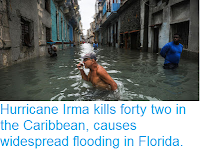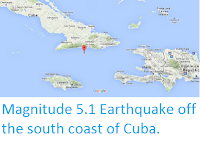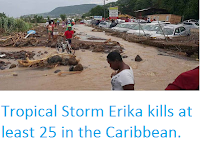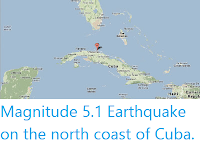The United States Geological Survey
recorded a Magnitude 7.7 Earthquake at a depth of 10 km roughly half way between the islands of Cuba and Jamaica in the Greater Antilles, at about 2.10 pm local time (about 7.10 pm
GMT) on Tuesday 28 January 2020. Remarkably there are no reports of any damage or injuries associated with
this event, however people have reported felling it across Jamaica, Cuba, the Cayman Islands, Haiti, Peurto Rica, Florida and western Mexico.
The approximate location of the 28 January 2020 Greater Antilles Earthquake. USGS.
Cuba lies on the southern portion of the North American Plate, to the
north of the Septentrional Fault Zone, which forms the boundary with
the Gonâve Microplate, a small tectonic plate underlying northern
Jamaica and most of the island of Hispaniola. The Gonâve Microplate is
moving east relative to the North American Plate, pushed by the
Mid-Cayman Spreading centre to the west of Jamaica.
To the south the Gonâve Microplate is separated from the Caribbean Plate
by the Enriquilo-Plantain Garden Fault Zone, which runs across Southern
Haiti and the Dominican Republic. To the west the fault runs through
central Jamaica. The Caribbean Plate is rotating clockwise, effectively
moving east relative to the Gonâve Microplate.
Plate movements and fault zones around the Gonâve Microplate. Mike Norton/Wikimedia Commons.
None of these movements are smooth, with rock formations at the
boundaries of the plates constantly sticking together then breaking
apart as the pressure from the plate movement builds up, triggering
Earthquakes in the process.
Witness
accounts of Earthquakes can help geologists to understand these events,
and the structures that cause them. The international non-profit
organisation Earthquake Report is interested in hearing from people who may have felt this event; if you felt this quake then you can report it to Earthquake Report here.
See also...
Follow Sciency Thoughts on Facebook.








